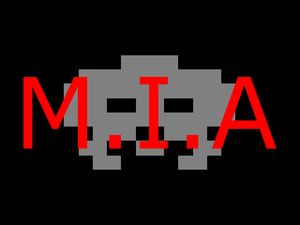Lost In Translation/Teenage Mutant Ninja Turtles - Turtles in Time
| Teenage Mutant Ninja Turtles Turtles in Time | |
|---|---|
| Manufacturer | Konami |
| Released | 1991 |
| Control Method |
8-way Joystick 2 Button(s) |
| Main CPU | 68000 (@ 16.000 MHz) Z80 (@ 8.000 MHz) |
| Sound CPU | Stereo YM2151 (@ 3.580 MHz) K053260 (@ 3.580 MHz) |
| Video Details |
Raster (Horizontal) 304 x 224 pixels 60.00 Hz 2,048 Palette colours |
| Screens | 1 |
| ROM Info | 12 ROMs 6,881,280 bytes (6.56 MiB) |
| MAME ID | tmnt2 · tmnt22p · tmnt2a |
About The Game
Teenage Mutant Ninja Turtles - Turtles in Time is a 4-player, arcade video game beat-em-up.
The sequel to 1989's hugely successful original, 'Turtles in Time' once more sees the four heroes taking on Shredder and his army. Game-play remains similar to the original game, but the experience is enhanced further with the obligatory improved graphics and sound effects. 'Turtles in Time' also features a larger variety of levels, as now the battle between good and evil rages across time as the Turtles travel to prehistoric, pirate and Wild West times in their pursuit of the elusive Splinter.
Yet again, Konami's mastery of the genre was in evidence as the manic energy and humour of the cartoon and comic-book series upon which the game is based was captured perfectly.
Additional Technical Information
Players : 4
Control : 8-way joystick
Buttons : 2 (ATTACk, JUMP)
Trivia
This is the only franchise of the so-called 'Ameri-comi Connection' series that had an arcade sequel.
Just like the previous game, it has references which don't come from the TV show in which is mainly based upon. The enemies at 'Skull & Crossbones', Rhazar and Tokka, are the two mutants that Shredder creates to destroy the TMNT in the second film and the Super Shredder form at 'Technodrome: The Final Shell Shock' also comes from the film when he tries the mutagen on himself.
This game is not based on the 3rd TMNT film. In that film the turtles travel in time only to the 1700's Japan. In this game, they don't even go to Japan.
Soundtrack Releases :
Konami All-Stars 1993 ~ Music Station of Dreams (KICA-9016~8) (12/24/1992)
The song that plays in the attract mode is known as 'Pizza Power' which is from the 'The Teenage Mutant Ninja Turtles : Coming Out of Our Shells Tour'. Here are the lyrics to Pizza Power :
Growing up in a glass bowl,
with chameleons, lizards, and tadpoles.
It hardly enters your mind,
that there's something better than this.
A lettuce leaf or a carrot,
maybe a seed from a parrot.
Believe me when it gets you,
the word gourmet just don't exist.
(chorus)
For pizza power,
a flying saucer food delight.
Pizza power,
that power makes us feel all right.
Updates
The US versions are slightly different, they have the "Winners Don't Use Drugs" screen.
Series
Staff
- Director
- G. Suzuki
- Game Programmer
- K. Takabayashi
- Character Designer
- Moriyanma 27
- Graphic Designer
- M. Inafuku
- Visual Designer
- S. Kitai
- Sound Designer
- T. Ogura
- Music Composer
- Mutsuhiko Izumi
- Hardware Design
- Yasushi Furukawa
Cabinet and Artwork
Ports
- Consoles
- Nintendo Super Famicom ("Teenage Mutant Ninja Turtles IV - Turtles In Time")
- Sega Mega Drive (1992, "Teenage Mutant Ninja Turtles - the Hyperstone Heist")
Soundtrack Releases
| Album Name | Catalogue No. | Released | Publisher | Comments |
|---|---|---|---|---|
| Konami Special Music 1991 Golden Treasure Chest Third Year of the Heisei-era Edition | KICA-9005~8[1] | 1990-12-21 | King Records | 4 CD version. |







